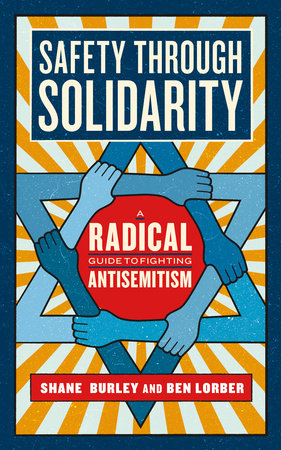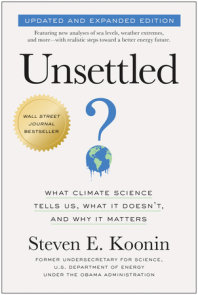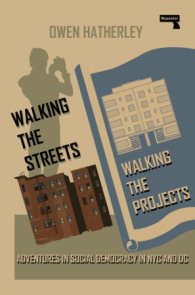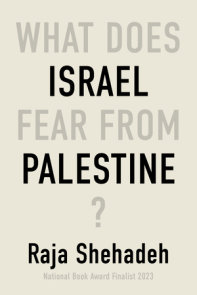TEACHING GUIDE
NOTE TO TEACHERS
Antisemitism is on the rise today. From synagogue shootings by white nationalists, to right-wing politicians and media figures pushing George Soros conspiracy theories, it’s clear that exclusionary nationalist movements are growing. By spreading division and fear, they put Jews, along with other marginalized groups and multiracial democracy itself, at risk. And since the outbreak of war in Gaza, debates around antisemitism have become more polarized and high-stakes than ever. How can we stand in solidarity with Palestinians seeking justice, while also avoiding antisemitism — and resisting those who seek to conflate the two? How do we forge the coalitions across communities that we need, in order to overcome the politics of division and fear? Activists and journalists Ben Lorber and Shane Burley present thoughtful discussion on the context of Safety Through Solidarity, while providing concrete points on how to rebuild the movement against antisemitism.
TEACHING IDEAS
HOW TO (RE)BUILD THE MOVEMENT AGAINST ANTISEMITISM
Focus on the sources of antisemitism rather than just “tropes.” Antisemitism is an idea that protects power by diverting righteous anger away from those responsible and onto a fictional entity. Movements fighting antisemitism should look at the political, business, and community leaders who foment division using antisemitic conspiracy theories.
Any useful approach to fighting antisemitism necessarily unites both Jews and non-Jews. Because antisemitic conspiracy theories are often used to piece together other bigoted ideas and to protect structural inequalities, eradicating antisemitism is in the interest of everyone who is marginalized by our society’s structures. The only effective option is working together to build a mass movement.
Creating technocratic institutions to address antisemitism is not enough. Instead, we need to focus on building a social movement that can address institutions of power that mobilize antisemitism and then undercut their behavior with community force.
While antisemitism on the political Left is never as severe as it is on the political Right, it still does still emerge. When it does, we want to focus on education and accountability, particularly if we hope to mobilize social movement structures to push back on the origin point of all forms of oppression. This means developing plans of education, transformative justice, and community safety. This does not, however, mean ignoring or excusing antisemitism or allowing it to proliferate.
A significant piece of reclaiming the fight against antisemitism is rebuilding the Jewish Left, and this requires creating spaces where Jews can talk about their issues and share common struggles. Right now, Jewish establishment and center-right organizations dominate this discussion, so we have to build our own institutions to allow a different model of Jewish flourishing to rise.
We need to build a common understanding of the problems of conspiracy theories and their role in not just reinstating oppressive social ideas, but in contorting our impulses towards actions away from potential victory. Without these changes we will never be able to build mass movements capable of changing the underlying social conditions of capitalism, empire, and statecraft.
Antifascist movements must remain a critical piece of defending targeted communities against reactionary forces and in ensuring social movements remain a safe place for all participants and capable of reaching their goals. Antifascism has become an important part of our political landscape since the rise of the alt-right and Trump and these steps offer a fresh opportunity to make antifascism a foundational piece of building the world we deserve.
DISCUSSION AND WRITING
How do you define antisemitism? How do you know when someone has experienced it, and what role has it traditionally played in Western societies?
What are some features unique to antisemitism that other forms of oppression and bigotry lack? And what features does it share with others? Why has it recurred over centuries, and what are the social forces that continue to revive these ideas?
What relationship does antisemitism have to other forms of oppression, such as anti-Blackness, anti-immigrant xenophobia, and queerphobia? How do these ideas reinforce one another?
What are some ways that Jews have, historically and contemporarily, organized their communities to challenge antisemitism and keep themselves safe? What methods have worked, and what haven’t?
How have white Christian nationalists used antisemitism to help build their movement, and what kind of threats does the far-right currently hold for Jews and other marginalized communities?
How has the state previously used antisemitism to divide social movements? How have Jewish organizations manipulated the fear of antisemitism to do the same?
How have Israel advocates mobilized the language of antisemitism to defend Israel and political Zionism? What does it mean to “weaponize” antisemitism?
What are some reasons that non-Jews could be invested in the fight against antisemitism?
How can you build coalitions between Jewish and non-Jewish communities to fight antisemitism and other forms of oppression? What commonalities do these communities hold that they can build a shared plan of action around? And who has done this successfully across history?
What are some highlights from the history of the Jewish Left that give us examples of how we can fight antisemitism from an antiracist, antifascist, and intersectional perspective?
How can we build movements that both prioritize the fight against antisemitism and the struggle to liberate Palestine? What common cause do those fights have?
How can we bring a radical new approach to fighting antisemitism into the organizations we are already a part of? How can labor unions, tenant unions, community groups, churches, schools, and other institutions take on this work effectively?
What are strategies and tactics that you have learned in other types of social movements that would work to confront antisemitism?
×
Become a Member
Just for joining you’ll get personalized recommendations on your dashboard daily and features only for members.
Find Out More Join Now Sign In





















